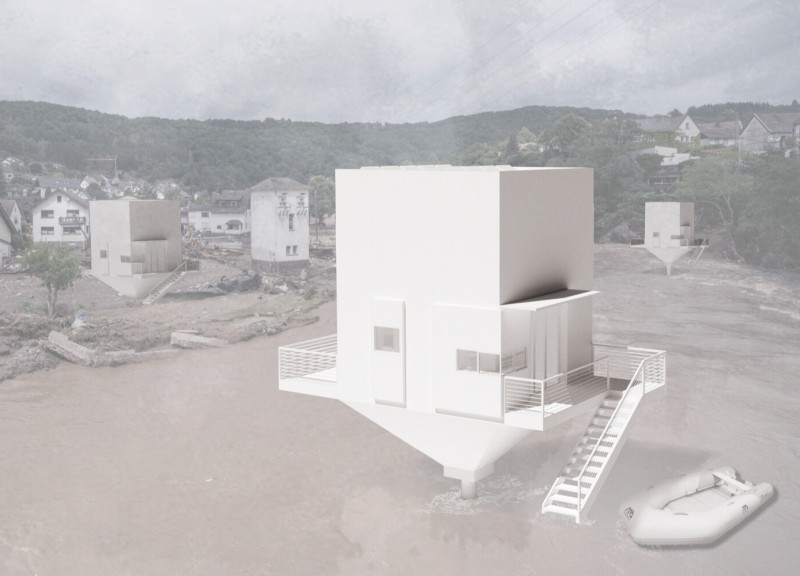5 key facts about this project
At the core of the design is an innovative usage of space that prioritizes usability without compromising on style. The layout reflects a deep understanding of both the needs of the occupants and the dynamics of the surrounding area. Each element within the structure is strategically designed to promote flow and accessibility, ensuring that the building remains inviting and functional. Open plan areas encourage interaction and engagement, which is crucial for the project's intended use. Particular attention has been given to natural light; large windows and well-placed skylights allow sunlight to flood the interiors, creating a welcoming atmosphere that shifts with the passing hours of the day.
The materiality of the building plays a vital role in both its aesthetic appeal and functional performance. A careful selection of materials has been made with sustainability in mind. These include locally sourced timber, which adds warmth and lends a sense of authenticity, as well as durable stone and metal elements that signify permanence and strength. The combination of these materials allows for a robust structure that requires minimal maintenance while highlighting the natural beauty of the building’s design. Additionally, eco-friendly finishes and insulation techniques have been employed to enhance the energy efficiency of the project, allowing it to operate in harmony with the environment.
The design approach is distinct in its sensitivity to cultural context. The architect has incorporated local architectural styles and traditions to ensure the project resonates with the community's identity. This thoughtful integration fosters a sense of belonging and connection among users and neighbors. The facade of the building, with its unique patterns and rhythmic elements, reflects traditional motifs while employing modern interpretations that appeal to a contemporary audience. This blend provides not only aesthetic value but also a narrative that speaks to the history and evolution of the area.
An important aspect of the project is how it engages with its surroundings. Outdoor spaces are thoughtfully designed to complement the indoor areas, creating a seamless transition between the two. Gardens, terraces, and patios invite users to interact with nature, enhancing the overall experience of the space. These outdoor areas are not just appendages to the building; they are essential components that promote social interaction and well-being.
In considering the project's impact, it is evident that the design encourages community involvement. By integrating spaces for public gathering, the architectural layout supports a variety of functions—from casual meet-ups to organized events. This multifaceted approach not only enriches the user experience but also fosters a collective sense of ownership and pride in the space.
The project exemplifies the importance of adaptive reuse, where existing structures might have been preserved and integrated into the new design. This respect for the past is not only environmentally responsible but also adds layers of historical context to the new design narrative. By embracing what already exists and enhancing it with modern sensibilities, the project reduces waste and celebrates the character of the site.
This architectural design project stands as a testament to the potential of thoughtful design to influence everyday life positively. Every decision made, from material selection to spatial organization, reflects a commitment to creating a meaningful and functional space that enhances the surrounding environment. The unique design approaches, along with careful consideration of materiality and cultural context, collectively contribute to a project that is not only visually appealing but also socially responsible and environmentally attuned.
To delve deeper into the intricacies of this architectural project, including architectural plans, architectural sections, and further architectural ideas, one is encouraged to explore the project's presentation. There, one may uncover the finer details and conceptual foundations that make this design a notable contribution to contemporary architecture.


























